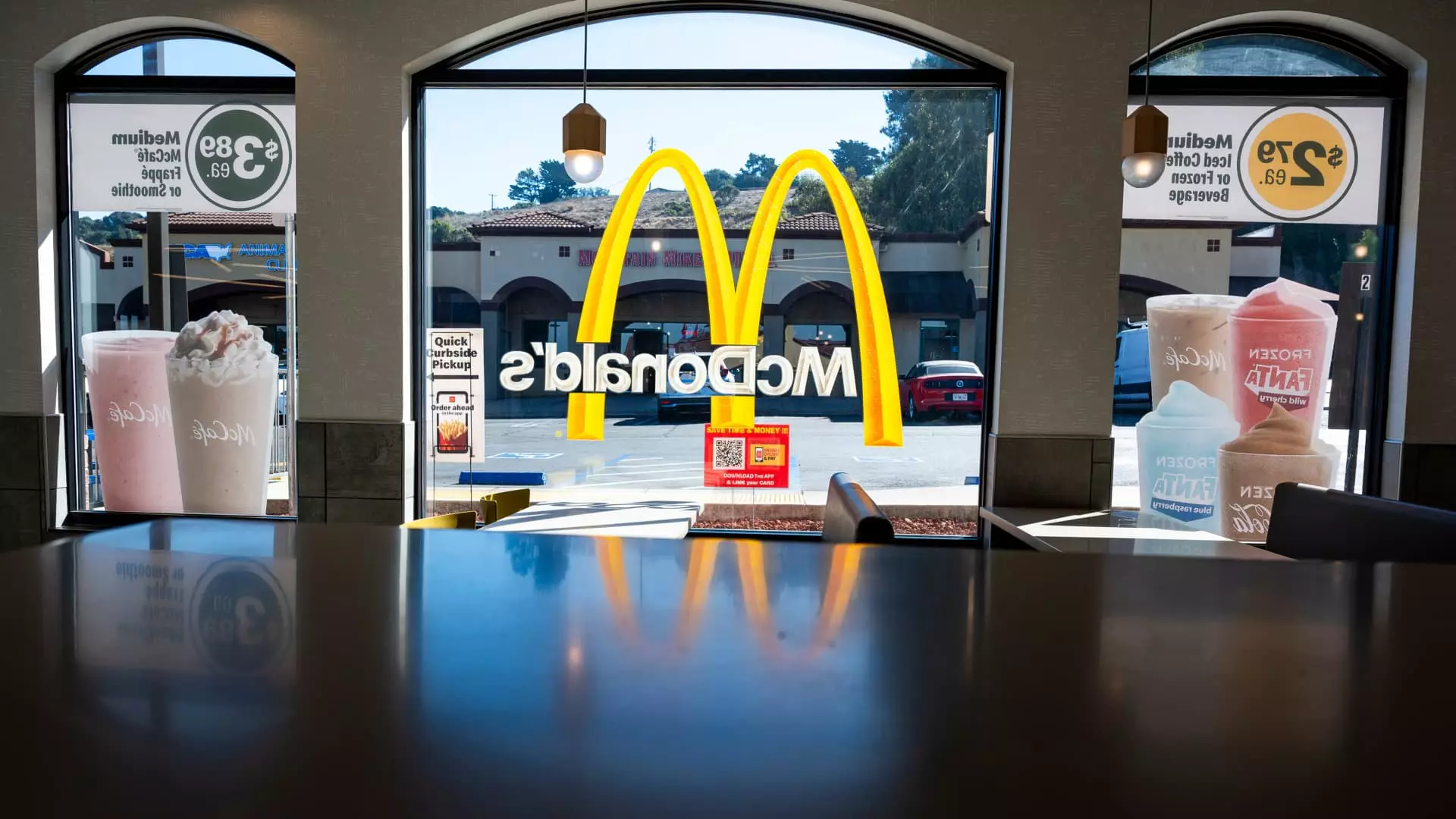The restaurant industry has often been portrayed as a barometer of economic health and consumer sentiment. As we peer into the future of 2025, it is essential to reflect on the current dynamics affecting this key sector. The early months of the year have been challenging, characterized by inclement weather, shifting consumer behavior, and economic uncertainty. However, as historical trends suggest, hope for recovery lingers, setting the stage for potential growth later in the year.
As cold fronts sweep through the nation and wildfires rage in pivotal areas like Los Angeles, restaurants are grappling with how these elements contribute to overall foot traffic and sales. Notably, fast-food giants like Burger King and Popeyes have hinted at recovering sales attributed to value-driven offerings. Analysts highlight that consumers, still hesitant to abandon home-cooked meals, are drawn back by affordable dining options. However, industry veterans recognize that January emerged as a particularly challenging month. Wendy’s Chief Financial Officer, Kenneth Cook, voiced the industry-wide sentiments regarding adverse weather impacting consumer engagement.
Interestingly, despite a 3.4% rise in fast-food net sales when compared to the previous year, this growth marks a decline from December’s robust figures. Additionally, segments like breakfast and lunch have faced dwindling traffic, hinting at a fundamental issue: consumer wariness amidst economic fluctuations. Subway’s President, Doug Fry, encapsulated this sentiment, noting that discerning consumers are not just looking for meals but are also prioritizing value, portion size, and quality as they navigate their budgets.
Despite January’s discouraging statistics, many industry analysts anticipate a gradual upward trajectory for sales as the year unfolds. Drawing upon experiences from the previous year, they expect easier comparisons due to the significant downturns experienced in 2024. Indeed, only one month, November, escaped negative traffic trends, while usual high points, like summer, saw declining sales—an anomaly for the restaurant sector. As public sentiment improves and barriers from last year’s challenges begin to fade, a modestly upbeat forecast for the summer months brings renewed hope to chain executives.
Nonetheless, uncertainties persist. Chipotle’s recent disclosures indicate that January’s struggles were exacerbated by untimely weather conditions and external factors like a national public holiday falling midweek. The chain’s predictions of flat same-store sales in the first quarter show the challenge that remains as it faces more formidable competition from last year’s aggressive promotions.
In addition to seasonal impacts, rising inflation remains an ever-looming specter for the restaurant industry. The overall consumer sentiment index has dipped to a seven-month low amid fears of escalating prices, placing further strain on disposable income. The Department of Labor’s recent data shows that away-from-home food prices have risen by 3.4% year-over-year, indicating the economic pressure consumers are currently experiencing. Restaurants are caught in a dual struggle: they need to maintain profitability while simultaneously appealing to price-sensitive customers whose purchasing power is diminished.
Companies such as Chipotle, Wendy’s, and McDonald’s are cautiously optimistic, indicating a restrained anticipation concerning the impact of tariffs and rising ingredient costs. Chipotle, for example, imports a significant portion of its avocados from Mexico, leading them to closely monitor any shifts resulting from geopolitical tensions. While they are not currently expecting a drastic contraction in business due to tariffs, consumer wariness surrounding economic conditions cannot be overlooked.
Amid these headwinds, each chain faces unique challenges and operational narratives. McDonald’s, which experienced diminished sales linked to an E. coli outbreak last year, is betting on a full rebound in the second quarter if market conditions stabilize. They maintain confidence that consumer spending patterns will favor them should economic indicators improve, particularly among lower-income demographics—an underserved market segment that could spell recovery if correctly tapped.
Conversely, Starbucks is navigating through a more complicated landscape, having seen four consecutive quarters of declining same-store sales. The coffee chain has chosen to suspend its projections for fiscal 2025, indicating a more profound restructuring process is underway. Although the prognosis for improvement exists in the second half of the fiscal year, the challenges they face suggest that the road to recovery will require a longer, more strategic commitment.
As the restaurant industry turns towards the latter half of the year, the overarching narrative will center on resilience amid adversity. From fluctuating consumer behavior to competitive market demands influenced by external factors, chains must navigate with a keen awareness of the challenges they face. Nevertheless, the forecasts suggest a growing optimism as recovery patterns begin to emerge, hinting that as we step into the full swing of 2025, the industry may just succeed in its endeavor for a robust comeback. The blend of consumer sentiment and operational agility will ultimately determine the trajectory of this crucial economic sector.

Leave a Reply